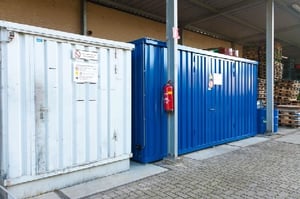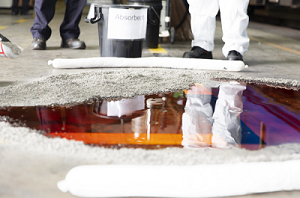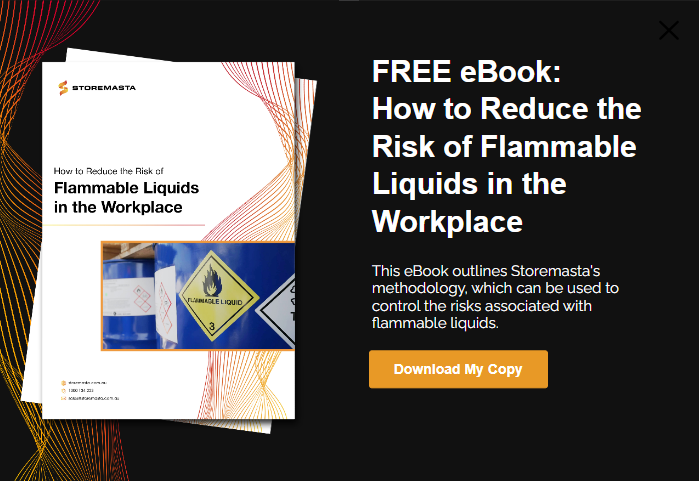Over the last decade, there has been a trend towards using old shipping containers for a multitude of unusual purposes. From makeshift workshops to dangerous goods storage facilities, shipping containers have been repurposed for a wide range of applications. However, when you’re considering your dangerous goods storage needs, you need to question the safety and compliance of using a discarded shipping container. Consider this: If a shipping container is no longer worthy for the storage of general freight, then would it be suitable for the storage of dangerous goods and hazardous materials?
When it comes to selecting compliant dangerous goods storage facilities, you should keep in mind that standard shipping containers aren’t equipped with any of the required safety features seen in a dangerous goods container. So, to clear up any confusion about the compliance of this type of storage, we’ll be detailing the specific design and construction features of a dangerous goods container. We’ll also be explaining how these compliant safety features can greatly reduce risk for your business.
Features Of A Compliant Dangerous Goods Container
Whether you’re storing Class 3 Flammable Liquids, Class 5 Organic Peroxides or Class 8 Corrosive Substances, a variety of control measures are required to maintain a stable, safe and compliant environment for your dangerous goods. A compliant dangerous goods container will feature a range of mandatory construction features that can reduce the risk of human harm, property damage and environmental pollution.
In the next section of our blog, we’ll be highlighting 4 key features of a dangerous goods storage container — and explaining how these features provide a level of protection not found in standard shipping containers.
1. Protection Against Harsh Chemicals
As you’re probably aware, each class of dangerous goods has specific chemical and physical properties which produce hazards for the organisations that handle and store them.
For a facility to effectively reduce the risks associated with the dangerous goods that it stores, it must be manufactured in line with the requirements of the relevant Australian Standards. Therefore, there is no one storage container that is suitable for all classes of dangerous goods; containers must feature specific risk control measures that reduce the hazards associated with the dangerous goods class that they hold.

A compliant DG container will be equipped with the construction features to minimise risk for the people, property and environment of your organisation.
For example, a dangerous goods storage container used for the storage of flammable liquids will require different specifications to a container used for the storage of corrosive substances. The requirements for flammable liquids storage are found in AS 1940:2017, while the requirements for corrosives storage are found in AS 3780:2008.
Before a storage container is used for dangerous goods, the relevant Australian Standard must be checked to ensure that the chemical storage container is manufactured with all the correct features. These features will shield your business against the specific hazardous properties associated with the chemicals that you’re storing.
2. Ventilation
Some classes of dangerous goods such as flammable liquids, toxic substances, corrosive substances, organic peroxides and oxidising agents, give off hazardous vapours that can have severe effects on human health.
There are three different ways that you can become intoxicated from dangerous goods. These include ingestion, skin contact and inhalation. Of these three different routes of exposure, inhalation is the most common form of exposure. To reduce the risk of exposure to hazardous vapours and gases, dangerous goods storage facilities must be manufactured with the ventilation specifications outlined in the relevant Australian Standard for the class of dangerous goods being stored. If a dangerous goods storage container doesn’t have ventilation, it will not comply with the Australian Standards.
A container that’s constructed without adequate natural or mechanical ventilation — such as a standard shipping container — will not disperse hazardous vapours that may become concentrated within the container. Therefore, non-compliant containers without ventilation systems can put people at high risk of asphyxiation and human harm.
A high concentration of flammable vapours can also create further hazards if they meet a workplace ignition source. Incidents such as fires or explosions can occur if vapours build to unsafe levels within a storage container.
3. Spill Containment
When storing dangerous goods in your workplace, it’s crucial that the facility is capable of containing any chemical spills that may occur. If the hazardous chemicals stored inside a container happen to leak or spill, it will increase the risk that the substance poses.
To prevent the risks of harm due to dangerous goods spills, it’s a requirement of WHS Regulations and the Australian Standards for storage facilities to have a spill containment sump. The required spill containment capacity for dangerous goods containers is different for each class, so you should always reference the Standard to determine if your container is indeed compliant.

To comply with regulations, your dangerous goods container must feature a liquid-tight spill containment system that meets the capacity requirements.
If your dangerous goods shipping container doesn’t have a spill containment sump with the correct capacity for the class of dangerous goods that you are storing, it will be deemed as non-compliant. This issue can be overcome by investing in a dangerous goods store that has been manufactured in full conformance to the Australian Standards.
4. Dangerous Goods Signage
Another mandatory requirement for dangerous goods storage facilities is displaying the correct dangerous goods signage. Safety signage will allow workers to identify the class of dangerous goods that is being stored — as well as alerting them to the hazards associated with that particular class of chemicals.
As you would expect, each dangerous goods class has different signage requirements. These signage requirements are outlined in the relevant Australian Standard. If your dangerous goods shipping container doesn’t feature the correct dangerous goods and safety signage, you’ll be putting your organisation at risk of non-compliance.
Additional Requirements
For a storage container to be regarded as compliant, a range of further requirements must be met. These include:
Passage Within The Container
The dangerous goods container must have a passage of at least 800mm wide that extends from one end of the container to the other. This passage must be clearly marked with yellow paint not obstructed at any time.
This passage ensures that workers entering the dangerous goods container to retrieve dangerous goods can easily find their way out of the container in the event of an emergency.
Intrinsically Safe Electrical Equipment
You must not install electrical equipment within a flammable and combustible liquids storage container — unless the electrical equipment complies with AS/NZS 60079.14. This particular requirement is found in the Australian Standard AS 1940:2017 – The storage and handling of flammable and combustible liquids. It’s an important requirement for Class 3 liquids, as faulty electrical work could act as an ignition source for flammable and combustible chemicals.
Exit Door Within 6 Metres
The requirements explains that no point within a dangerous goods storage container shall be more than 6m from the containers exit door. This requirement allows people who are working within the container to quickly escape in the event of an emergency.
Workshops Within Dangerous Goods Containers
For a chemical storage container to comply with the Australian Standard, it must not contain a workshop. Combining a workshop within a storage facility for dangerous goods would pose risks upon the people using the container.
As we’ve explained, dangerous goods may release large amounts of hazardous vapours. If staff suffer continual exposure to these dangerous vapours it could cause a range of health problems including intoxication, respiratory damage and even fatalities.
If hot work, such as grinding and welding, were carried out in a container that stored flammable liquids, the sparks could ignite the flammable vapours and cause a fire.
Wooden Floorboards
Wooden floorboards absorb dangerous chemicals and are easily contaminated. Therefore, a chemical storage container must never be constructed with wooden floorboards.
Hazardous chemicals can easily seep into wood and stay there (even after the container is cleaned). A dangerous chemical reaction could occur if an incompatible substance was spilled in a container that previously housed another class of dangerous goods. Reactions between incompatible chemicals can cause a range of hazards including fires, explosions and the emission of harmful gases.

Shipping containers with wooden floorboards increase the risk of fire and explosion.
If you’re using a dangerous goods storage container that features wooden floorboards, it won’t be regarded as compliant — and should be decommission immediately. Compliant containers are generally constructed from materials such as sheet steel, which is impervious to spills and not prone to a chemical attack or reaction.
Shipping Containers Vs Dangerous Goods Containers
When storing dangerous goods, it’s crucial that you keep them in a safe and compliant storage facility. As we’ve highlighted in this blog, old shipping containers don’t have the mandatory features required by the Australian Standards — and are therefore a non-compliant method for dangerous goods storage. Features of a compliant container include protection from harsh chemicals, natural ventilation, adequate spill containment and dangerous goods signage.
Are you storing Class 3 Flammable Liquids in a dangerous goods container? Due to the range of risks associated with this class of chemicals, it’s vital that you carry out a risk assessment on your chemical handling and storage areas. If you’d like further details on how to identify, assess, control the risks associated with flammable liquids, why not access our eBook by simply clicking on the image below? It’s completely free and yours to download today.
Joining the team as a Dangerous Goods Storage Consultant, Melissa Hampton became Storemasta's Marketing Manager in late 2021. With extensive knowledge and experience in chemical compliance, Melissa is responsible for leading the Marketing team and helping shape their marketing strategy. In her spare time, you can find Melissa hiking, swimming and enjoying the great outdoors in beautiful north-west Tasmania.
